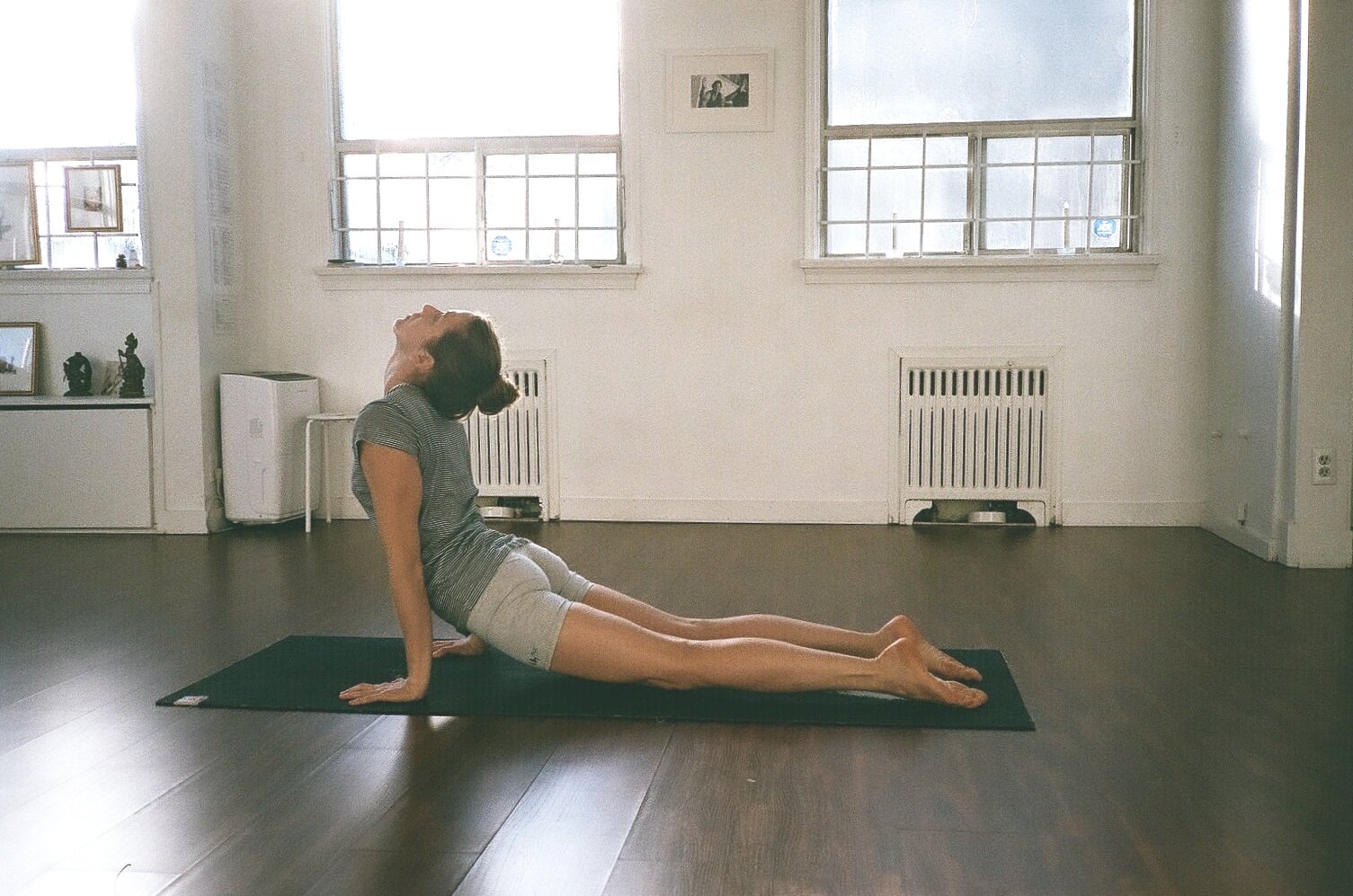Tristhana
Breath, posture, and gaze. Tristhana refers to three focal points in practice: posture, breath, and gaze. When practiced in harmony and with the correct method, these elements tune the body and mind, helping us find balance and steadiness within. These three actions are practiced in conjunction with one another.
Vinyasa refers to breath linked with movement. Every posture, also referred to as asana, has a defined breath count and a correct gazing point, or drsti.
Natalia Correa practicing at Ashtanga Yoga Vancouver. 2016 Photo: Kris Yen
The names of the 8 drstis in Ashtanga Yoga asana practice:
Urdhva drsti - look up
Brumadhya drsti - gaze towards the third eye
Nasagra drsti - gaze toward the tip of the nose
Parsva - look sideways, right or left
Nabhi drsti - look towards the navel
Hastagra drsti - gaze towards the middle finger
Angusta drsti - look toward the thumb
Padagra drsti - gaze towards the feet
Each drsti should be a soft gaze in the specified direction, moving only the eyes without shifting the whole head.
For beginners, focus first on memorizing the sequence of movements. Once that feels comfortable, incorporate proper breathing. Finally, add the specific gaze for each posture. Allow time for the body and nervous system to adapt gradually.
Eventually, harmony will arise between breath, posture, and gaze.
If you're unsure where to direct your gaze while practicing, choose a steady point for your eyes to rest, avoiding distraction. A steady gaze cultivates a steady mind.
In the beginning, it may also help to look softly towards the tip of the nose during each transition and posture until you're ready to memorize the specific drsti for each asana.
Dristi names and meanings are from the book Ashtanga Yoga Anusthana by R. Sharath Jois, First Edition, March 2013.
